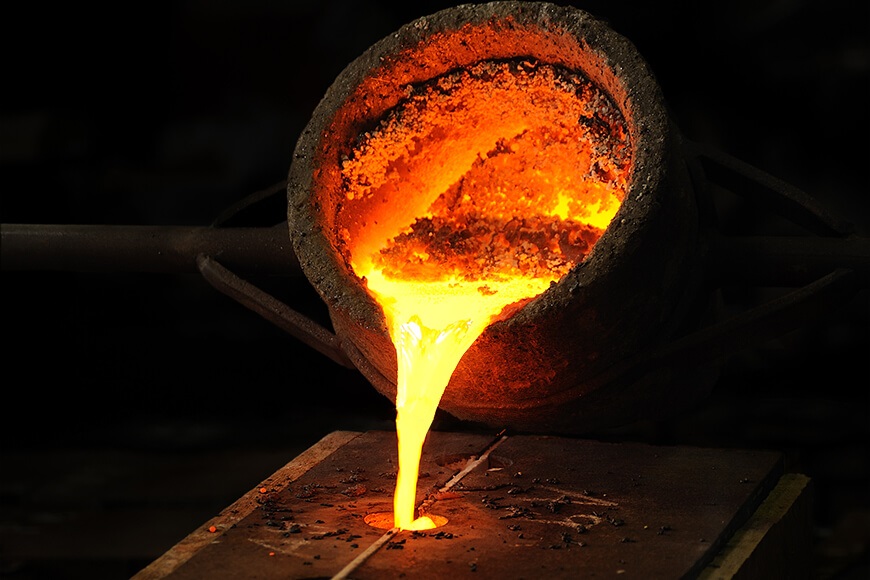Understanding the fundamentals of cope and drag molds is crucial for anyone looking to excel in metalworking or sand casting. In this guide, we will explore the basics, essential tools and materials, a step-by-step molding process, and common mistakes to avoid to ensure your casting projects are successful.
What is Cope and Drag?
In the realm of casting, cope and drag refer to the two parts of a mold used to create a metal cast. The “cope” is the top half of the mold, while the “drag” is the bottom half. Together, they form a cavity where molten metal is poured to create a desired shape. These molds are typically used in sand casting, a popular and versatile method for producing metal parts.
Sand casting involves packing sand around a pattern (a replica of the object to be cast) within a mold box. The mold is then split into the cope and drag sections, allowing the pattern to be removed, and the cavity left behind is filled with molten metal. This method is favored for its cost-effectiveness and ability to produce complex shapes with high precision.
Understanding these basic concepts sets the foundation for the casting process, making it easier to grasp the subsequent steps and techniques involved.
Essential Tools and Materials
Before you embark on your mold-making journey, you’ll need to gather some essential tools and materials:
-
Pattern: The object or model you want to replicate in metal.
-
Mold Box: A container to hold the sand and pattern.
-
Green Sand: A mixture of sand, clay, and water used to form the mold.
-
Rammers: Tools used to compact the sand around the pattern.
-
Sprue and Riser: Channels through which molten metal is poured and gases escape.
-
Parting Powder: A fine powder used to prevent sand from sticking to the pattern and mold box.
-
Mold Release Agent: A substance that ensures the easy removal of the pattern from the sand.
-
Melting Furnace: Equipment to melt the metal to be cast.
-
Protective Gear: Safety equipment such as gloves, goggles, and aprons to protect against heat and metal splashes.
Having these tools and materials on hand will prepare you for the molding process, ensuring that you can work efficiently and safely.
Step-by-Step Mold Making Process
Creating a cope and drag mold involves several precise steps:
-
Pattern Preparation: Ensure your pattern is clean and free of defects. Apply parting powder to facilitate easy removal from the sand.
-
Mold Box Setup: Place the drag (bottom half of the mold box) on a flat surface. Position the pattern in the center and apply parting powder around it.
-
Sand Packing: Fill the drag with green sand, using rammers to pack it tightly around the pattern. Ensure the sand is compact and level at the top.
-
Drag Inversion: Carefully invert the drag, ensuring the pattern stays embedded in the sand.
-
Cope Setup: Place the cope (top half of the mold box) on top of the drag. Align the two halves properly and apply parting powder to the sand surface.
-
Sand Packing for Cope: Fill the cope with green sand, compacting it as before. Insert the sprue and riser to create channels for the metal pour.
-
Separation and Pattern Removal: Carefully separate the cope and drag. Gently remove the pattern, leaving a precise cavity. Clean any loose sand from the mold cavity.
-
Final Assembly: Reassemble the cope and drag, ensuring a tight fit. Your mold is now ready for metal pouring.
Following these steps meticulously will help you create an accurate and functional mold, ready for the casting process.
Tips for Avoiding Common Mistakes
To achieve a successful mold and casting, be mindful of these common mistakes:
-
Improper Sand Compaction: Ensure the sand is packed tightly around the pattern to prevent defects in the mold.
-
Misalignment of Cope and Drag: Proper alignment is crucial for an accurate mold cavity.
-
Inadequate Parting Powder: Lack of parting powder can cause the pattern to stick, ruining the mold.
-
Poor Venting: Ensure adequate venting to allow gases to escape during the pour, preventing defects in the casting.
-
Rushing the Process: Take your time with each step to ensure precision and quality in your mold.
Avoiding these common pitfalls will significantly improve your chances of producing high-quality castings.
Wrapping Up: Your Guide to Cope and Drag Molds
Cope and drag molds are fundamental in the casting process, offering a versatile and cost-effective way to create metal parts. By understanding the basic concepts, gathering the necessary tools and materials, following a detailed step-by-step process, and avoiding common mistakes, beginners can successfully produce high-quality castings. Whether you are a hobbyist or aspiring professional, mastering cope and drag molds will significantly enhance your casting skills and project outcomes. Happy casting!

